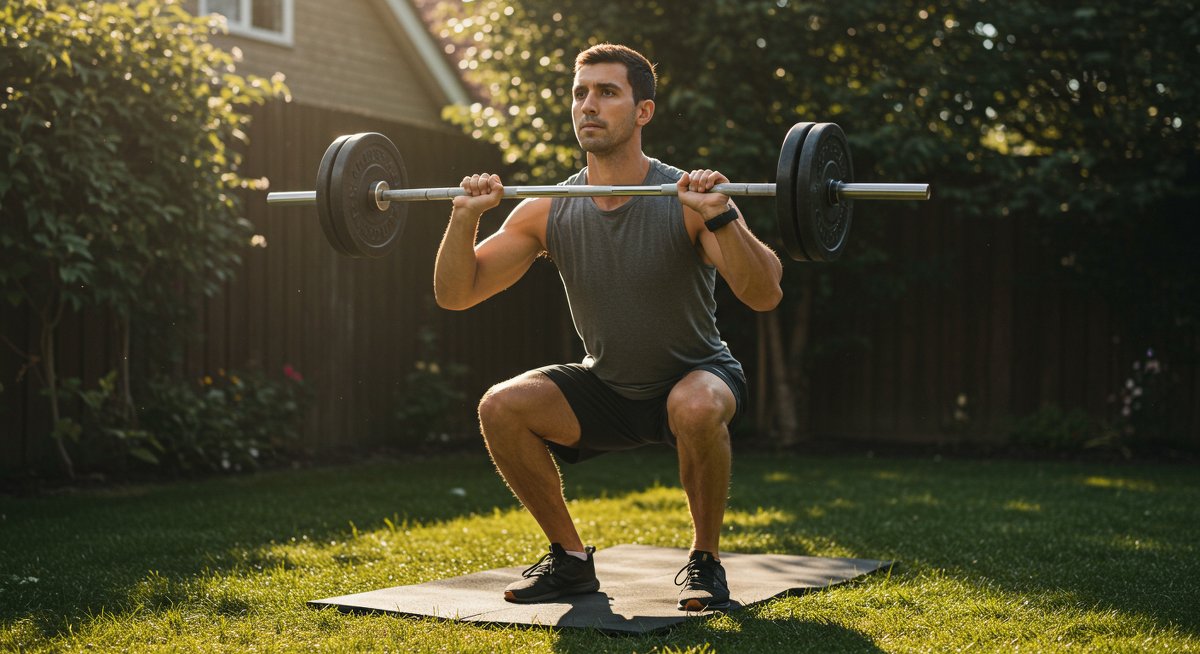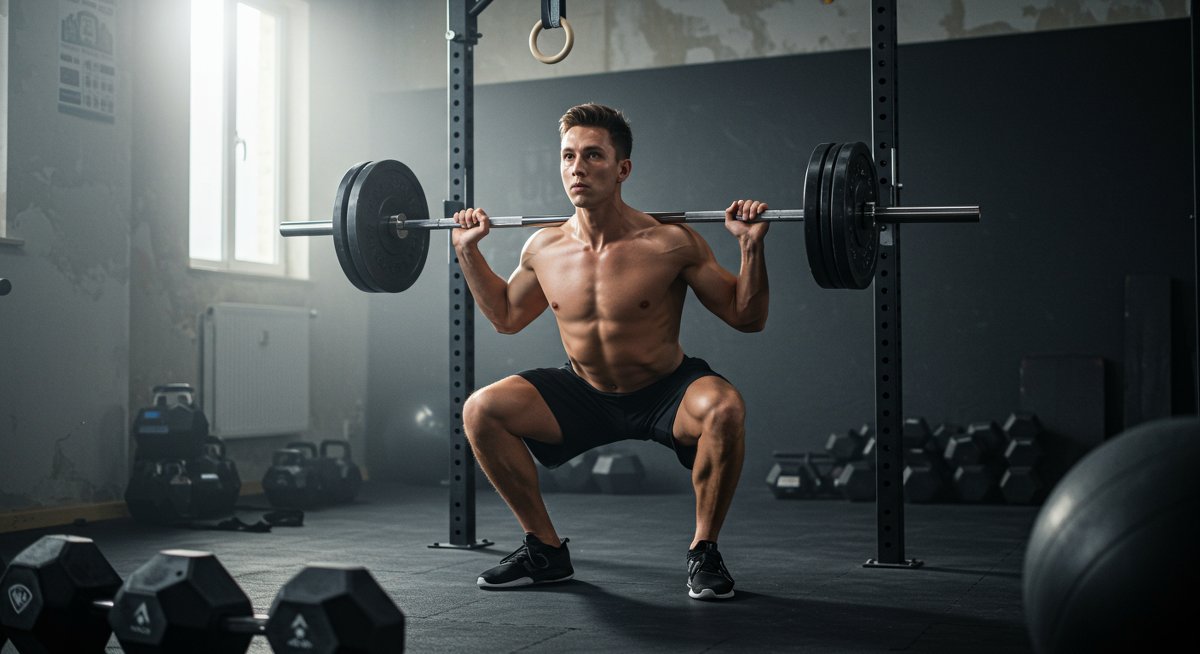Why This Reddit Post Got Me Thinking About Leg Day
So, I was browsing r/bodyweightfitness the other day, and a post titled "Best and most effective bodyweight leg exercises for strength & hypertrophy?" caught my eye. It's a question a lot of people have, especially when they're trying to ditch the gym or just prefer training at home. The guy was asking about building leg strength and muscle using just bodyweight, while also keeping his joints healthy. What I found really intriguing was the emphasis on finding exercises that are actually "worth the time". We've all been there, right? Spending ages on exercises that feel like they're doing something but don't actually deliver results.
This isn't just about aesthetics, either. Strong legs are crucial for everyday life. From climbing stairs to carrying groceries, your legs are doing the heavy lifting (literally!). And if you're an athlete, well, leg strength is non-negotiable. So, this simple Reddit post highlights a really important aspect of fitness that is often overlooked.
I wanted to dive deeper into this topic, beyond the usual squats and lunges. What are the hidden gems of bodyweight leg training? What are the progressions that actually make a difference? And how do you ensure you're not just spinning your wheels? I remember when I first started out with calisthenics, leg day always felt like an afterthought. It was so much easier to see progress with upper body exercises. But over time, I learned that a well-structured bodyweight leg routine can be incredibly effective.

Decoding the Best Bodyweight Leg Exercises: What the Reddit Community Says
The original poster mentioned he had some experience with sissy squats and gymnastics rings. These are great starting points! Sissy squats, when done correctly, can really target the quads, while rings add a whole new dimension to exercises like lunges and hamstring curls. One user in the comments suggested focusing on pistol squat progressions. These are incredibly challenging, but they build serious single-leg strength, and unilateral strength is incredibly important for overall balance and injury prevention. The same user also recommended shrimp squats – I love these, they really fire up the quads, glutes, and core. They’re brutal, but effective.
Another commenter emphasized the importance of plyometrics. Squat jumps, lunge jumps, and even calf raises on a single leg can add power and explosiveness to your lower body. Plyometrics can also help improve bone density, which is especially important as we age. But, and this is a big but, it's important to approach plyometrics with caution. Make sure you have a solid foundation of strength before you start jumping around, and always prioritize proper landing mechanics to protect your joints. One person mentioned incorporating Nordic hamstring curls using a doorframe setup. This is an incredible exercise for hamstring strength and injury prevention. Your hamstrings are crucial for knee stability, so strengthening them is always a good idea.
What All This Means for YOUR Bodyweight Leg Training
Okay, so let's say you're in a similar situation to the original poster. You've been doing bodyweight exercises for a while, but you're not seeing the results you want in your legs. What should you do? First, assess your current routine. Are you just doing the same old squats and lunges every week? If so, it's time to mix things up. Introduce variations. Try pistol squat progressions, shrimp squats, or single-leg calf raises. These will challenge your muscles in new ways and stimulate growth.
Second, focus on progression. Can you do 3 sets of 15 bodyweight squats without breaking a sweat? Then it's time to make them harder. Add weight, slow down the tempo, or try a more challenging variation like Bulgarian split squats. The key is to constantly challenge your muscles to adapt. Third, don't neglect your hamstrings. They're often the forgotten muscle group in leg training, but they're essential for strength, power, and knee health. Nordic hamstring curls, glute bridges, and even simple hamstring curls using a towel on a slippery floor can be incredibly effective. If you have access to rings, use them for hamstring curls and lunges. The instability of the rings forces your muscles to work harder to stabilize the movement.
The Leg Day Reality Check: Overcoming the Bodyweight Plateau
Here's the thing: bodyweight leg training can be incredibly effective, but it's not always easy. At some point, you're going to hit a plateau. You'll be able to do hundreds of squats and lunges without feeling a thing. It's at this point that many people give up and assume that bodyweight training just isn't enough for legs. But don't throw in the towel just yet! There are ways to overcome the bodyweight plateau. One of the biggest challenges is progressive overload. It's easy to add weight in the gym, but how do you make bodyweight exercises harder? As mentioned above, you can try more challenging variations, slow down the tempo, or add resistance with bands or weights. But there's another factor that's often overlooked: intensity. Are you really pushing yourself to your limit on every set? Or are you just going through the motions? Bodyweight training requires you to be more mindful of your form and effort.
Another challenge is motivation. Let's be honest, leg day is tough. It's easy to skip it and just focus on upper body exercises. But consistency is key to seeing results. Find a workout buddy, set realistic goals, and track your progress. The final challenge is dealing with injuries. Knee pain is a common complaint among people who train legs, especially with squats and lunges. If you're experiencing knee pain, stop what you're doing and assess your form. Make sure you're not locking out your knees at the top of the movement, and focus on controlling the eccentric (lowering) phase of the exercise. If the pain persists, see a physical therapist.
Tailoring Bodyweight Leg Workouts to YOUR Lifestyle
Okay, so how do you make all of this work in your real life? Let's say you're short on time. You don't have hours to spend in the gym or even at home. What's the most efficient way to train your legs with bodyweight? Focus on compound exercises that work multiple muscle groups at once. Squats, lunges, and glute bridges are all great options. Do 3-4 sets of each exercise, and push yourself to failure on each set. If you only have 20 minutes, that's enough time to get in a solid leg workout.
What if you have limited equipment? No problem! Bodyweight training is all about using your own body as resistance. You don't need any fancy equipment to get a great workout. You can use household items like chairs or steps to elevate your feet for lunges or Bulgarian split squats. You can use a towel on a slippery floor for hamstring curls. The possibilities are endless. If you travel a lot, bodyweight training is perfect. You can do it anywhere, anytime. No need to worry about finding a gym or packing equipment. Just find a space, and get to work.
Putting It All Together: A Step-by-Step Bodyweight Leg Routine
Alright, let's get practical. How do you actually put all of this into practice and design an effective bodyweight leg routine? Here’s how I'd approach it.
- Warm-up (5 minutes): Start with some light cardio, like jogging in place or jumping jacks. Then, do some dynamic stretches, like leg swings, hip circles, and torso twists. This will increase blood flow to your muscles and prepare your joints for exercise.
- Squats (3 sets of 15-20 reps): Start with basic bodyweight squats. Focus on proper form: keep your back straight, your chest up, and your knees behind your toes. If you find these too easy, try a more challenging variation, like jump squats or pistol squat progressions.
- Lunges (3 sets of 10-12 reps per leg): Lunges are a great exercise for targeting your quads, glutes, and hamstrings. Step forward with one leg and lower your body until your front knee is bent at a 90-degree angle and your back knee is close to the ground. Keep your back straight and your core engaged. Try walking lunges to up the intensity.
- Glute Bridges (3 sets of 15-20 reps): Glute bridges are a great exercise for strengthening your glutes and hamstrings. Lie on your back with your knees bent and your feet flat on the ground. Lift your hips off the ground until your body forms a straight line from your shoulders to your knees. Squeeze your glutes at the top of the movement.
- Calf Raises (3 sets of 15-20 reps): Calf raises are a great exercise for strengthening your calf muscles. Stand on a slightly elevated surface, like a step or a book. Rise up onto your toes, squeezing your calf muscles at the top of the movement.
- Cool-down (5 minutes): Finish with some static stretches, holding each stretch for 30 seconds. Focus on stretching your quads, hamstrings, glutes, and calves. This will help improve your flexibility and reduce muscle soreness.

My Two Cents: Bodyweight Legs Are Worth the Effort
So, here's my take on all of this. Bodyweight leg training is absolutely worth the effort. It's a convenient, effective, and sustainable way to build strength, muscle, and improve your overall fitness. But it's not a magic bullet. You need to be consistent, progressive, and mindful of your form. You need to challenge yourself and overcome plateaus. And you need to be patient. Results don't happen overnight. I've seen it work for myself, and I've seen it work for countless others. But it requires dedication and a willingness to learn. Maybe I'm biased, but I think that the benefits of bodyweight training extend far beyond just physical fitness. It teaches you discipline, resilience, and the importance of listening to your body. And those are lessons that can be applied to every aspect of your life.